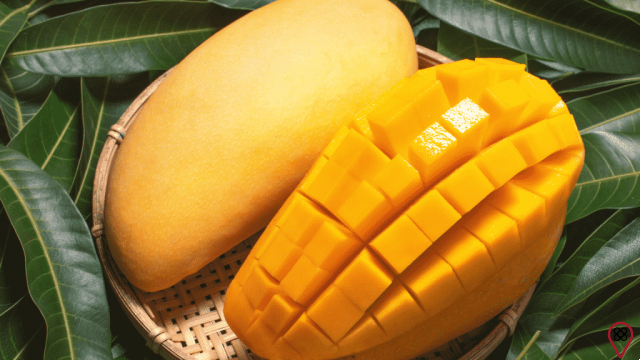When did you learn to eat alone? To answer that question, you would probably talk to the person who raised you. That's because we don't remember that period, or even other important phases of our development, like the first steps or the first words.
Despite this, if we can currently eat alone, it is because we had a person by our side, who helped us in this process of acquiring independence and autonomy. Now it's your turn to be that support for your baby, who will also learn to eat on his own, without difficulties.
While the process of self-feeding is not quick, there are some mistakes that can make it difficult. On the other hand, there are ways to encourage this phase of development, making everything simpler. Next, delve deeper into this topic to help your baby grow!
Mistakes that make the baby take time to eat alone
See what attitudes you should avoid so that your baby can feed himself more easily!
1) Prevent the baby from feeding with their hands
Babies are still getting to know the world and they often do so through touch. So it is normal for them to want to feed using their hands, because they need to feel the texture of the food they are going to take to their mouth. As they acquire motor coordination, they abandon the habit of eating with their hands. So there is no reason to stop them from eating this way initially.
2) Forbid him to play with food
With a baby in our daily lives, even everyday activities become more difficult, like cleaning the house. So it's understandable that you want to avoid any mess. But babies like to play with their food, because that's how they understand and know what they're eating. This stage is essential for the development of independence when it comes to eating. So don't ban them! Ask for help to get everything in order later.
3) Feeding food in his mouth without letting him use cutlery
Using cutlery is difficult for someone who is still learning to use their hands, and this process can be stressful for little ones. Despite this, this is one of the motor coordination development processes that will help them to feed themselves better and on their own. So encourage your baby to use cutlery, choosing options suitable for their age, which are usually adapted.
4) Giving food out of hours
An organized day is more pleasant for anyone, because our tasks become predictable and we don't deal with the stress of unforeseen events. For this reason, it is essential that babies eat at the same time every day. When giving food out of time, the process of eating becomes a reason for nervousness, making this moment less pleasant.
5) Insist on soup and baby food
Even though soup and baby food are more practical when it comes to feeding a baby, the repetition of these foods can harm their development. That's because the child must get used to new textures and different flavors, including to use the teeth that are emerging. Therefore, do not reduce the menu to pasty or liquid foods.
6) Putting movies and drawings during the meal
Distracting the baby at mealtimes can be a convenient strategy for family members who are already exhausted by the routine. However, this act is harmful to children. The reason for this is that, focused on the television or tablet, they stop paying attention to what they are eating. As a result, they lose the pleasure of eating and the moment of family life.
Tips to encourage baby to eat alone
After knowing some mistakes that make it difficult for the baby to be independent when feeding, learn what are the ways to stimulate this development!
1) Offer foods that are easy to pick up and chew
As it is essential that the baby uses his hands to eat, offer the food cut into sticks or slices. That way, he'll have an easier time handling them and won't run the risk of choking on any of the options. It's also a good idea to cut vegetables and fruits into small pieces to make them easier to chew.
2) Prepare the baby's favorite dish
Every baby has a favorite dish that they could eat every day. If this option is healthy and can be eaten with your hands, prepare it throughout the week. That way, when your baby sees the food he likes best, she'll have an extra incentive to feed. This excitement can even make the child want to eat alone, without having to wait for adults.
3) Eat in front of the child
Observation is essential for babies to learn how to feed. So, at mealtime, position yourself in front of the child and eat their food, while watching them eat alone. When you do this, the baby has an example to play, and at the same time, he knows that you are there to help him if he needs it.
4) Persist in the process
It is likely that you or any other family member of the baby will feel like feeding the baby again, rather than letting the baby eat alone. It is important to keep in mind that, for him, eating with help is more comfortable. Without the encouragement of eating alone, the baby will not do this spontaneously. So, even if it is challenging at times, persist in the process.
5) Show your support
Any difficult task becomes less challenging when we have a good incentive, right? It's the same for your baby too. So you should praise him while he eats, avoid fighting over dirt and mess at this time, and show him you're on his side. Show him that he is achieving something great and that he will get better and better over time.
You may also like:
- 10 foods that make you more tired
- BLW method: food introduction without baby food
- Understand the oral stage of child development
- Reflect on the helpless baby and adult
- Learn Shantala, a technique to cure colic in babies
What are the best foods to encourage baby to eat alone?
Not all foods are suitable for a baby to eat alone. Some flavors and textures may not be suitable for a palate that is still developing, in addition to presenting risks to the child. Nuts and grapes, for example, can result in cuts and choking, creating an unpleasant situation.
In this sense, it is necessary to know the foods that are easy to chew, taste and swallow, viable for the baby to eat alone. However, never offer all options at once, so as not to confuse the child. Opt for two or three different foods at each meal. Check out the best options!
1) Sliced bananas
Banana is a sweet, soft and easy to handle energy source. So it works as a fun food for the baby, who will have more of an incentive to enjoy it unaided. As it grows, you will even realize that you can easily bite the banana to eat it, without needing to cut it into slices.
2) Avocado in pieces

Avocado is a neutral-tasting food, rich in potassium, which should not be sweetened when offering it to a baby. Because it is easy to chew and handle, it is a colorful and safe option for children who are still learning to eat on their own, as well as being well accepted by children's taste buds.
3) Boiled peas
Boiled peas are an afternoon snack recommendation rich in protein and fiber. Ideally, you cook them without salt and offer a ladle between meals. Because they are small, easy-to-chew balls, children who already know how to pinch will be able to eat on their own without difficulties, enjoying the process.
4) Sliced peach
Peach is a sweet, soft fruit rich in vitamins A, E and K. You should offer it sliced, peeled and pitted, to make eating easier. Because they are succulent, the slices will still have a surprise component, which will attract your baby's attention even more.
5) Cooked lentils
Like peas, cooked lentils should be prepared without salt. In that case, you can offer them warm to your baby. By feeding with them, he will increase the levels of protein in the body and stimulate fine motor coordination, by training the pincer movement with small, flattened grains.
6) Sliced carrots
Sliced carrots are recommended for babies who are already teething. That's because they are visually appealing, have a lot of vitamin A, have a sweet taste and need to be chewed several times. Thus, the child can eat with their own hands a food with a different texture, which helps in their development.
7) Sliced mango
Among the sweet and easy-to-eat food options is mango, which is rich in vitamin A. When cut into slices or cubes, it can really amuse a baby who is learning to eat on his own. It is important that you choose a sleeve that is free of lint, which can bother your baby when eating.

8) Broccoli
Unsalted, steamed broccoli is a great source of iron and potassium for children over the age of two. That's because it looks like a small tree and is very nutritious. So the baby has fun eating and still strengthens its own health.
9) Cauliflower
With the same preparation of broccoli, you can offer cauliflower to your baby. While this vitamin C-rich option isn't as visually appealing as broccoli, the milder flavor can appeal to many palates. Also, you can offer both options together!
10) Shell Noodles
Shellfish noodles are not a complete meal, as they are made up of only carbohydrates. However, it is a soft, easy to handle and fun option for your baby. Remember to cook it without salt and offer it when it is between cold and warm, to be safer to handle with your hands.
After all the tips we have presented, you already have everything you need to ensure that your baby can feed on his own, more easily. But it is important to emphasize that each child has their own time, and that we should not force or rush them while they are still learning. So if you need more help, don't hesitate to seek the advice of a professional.



















